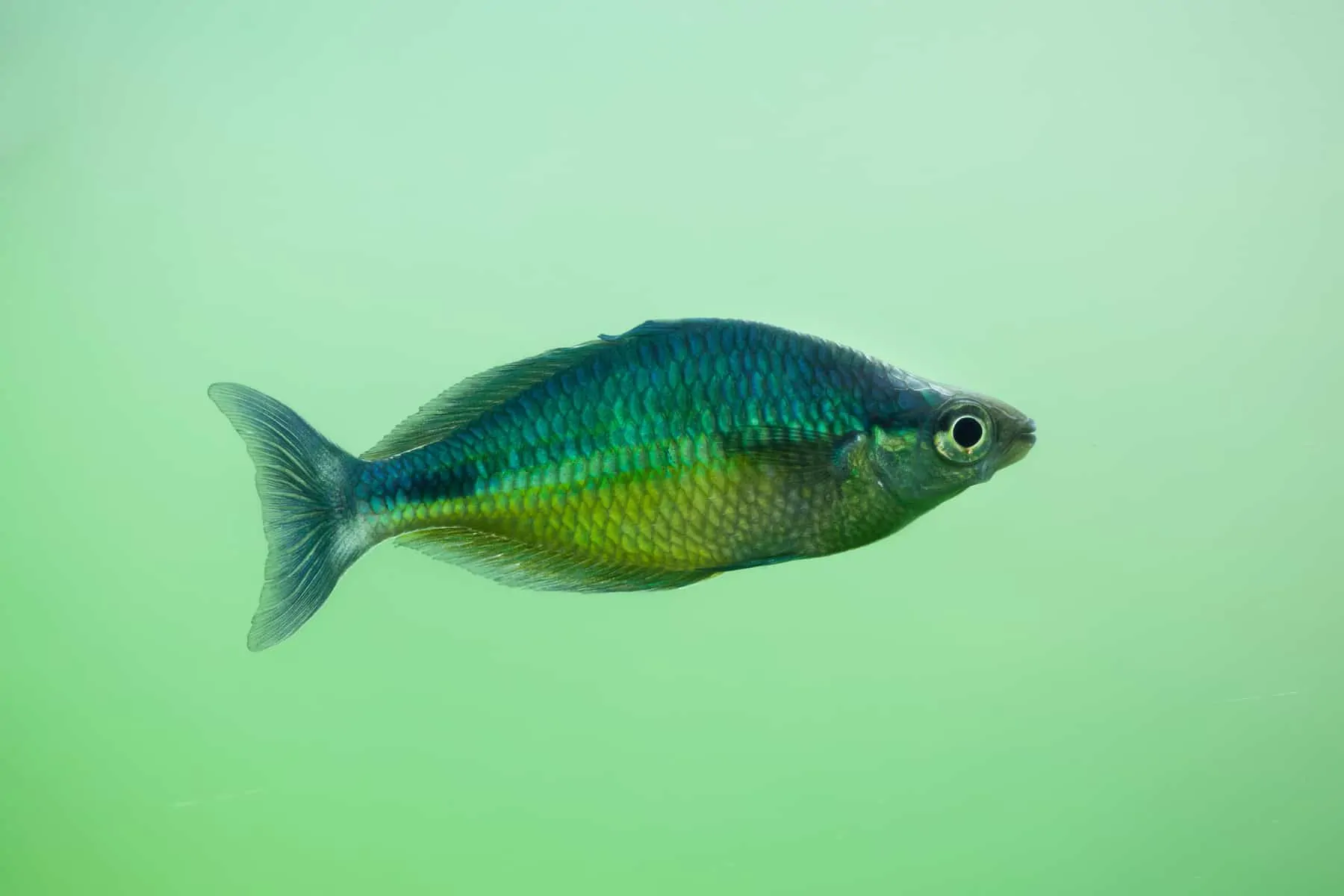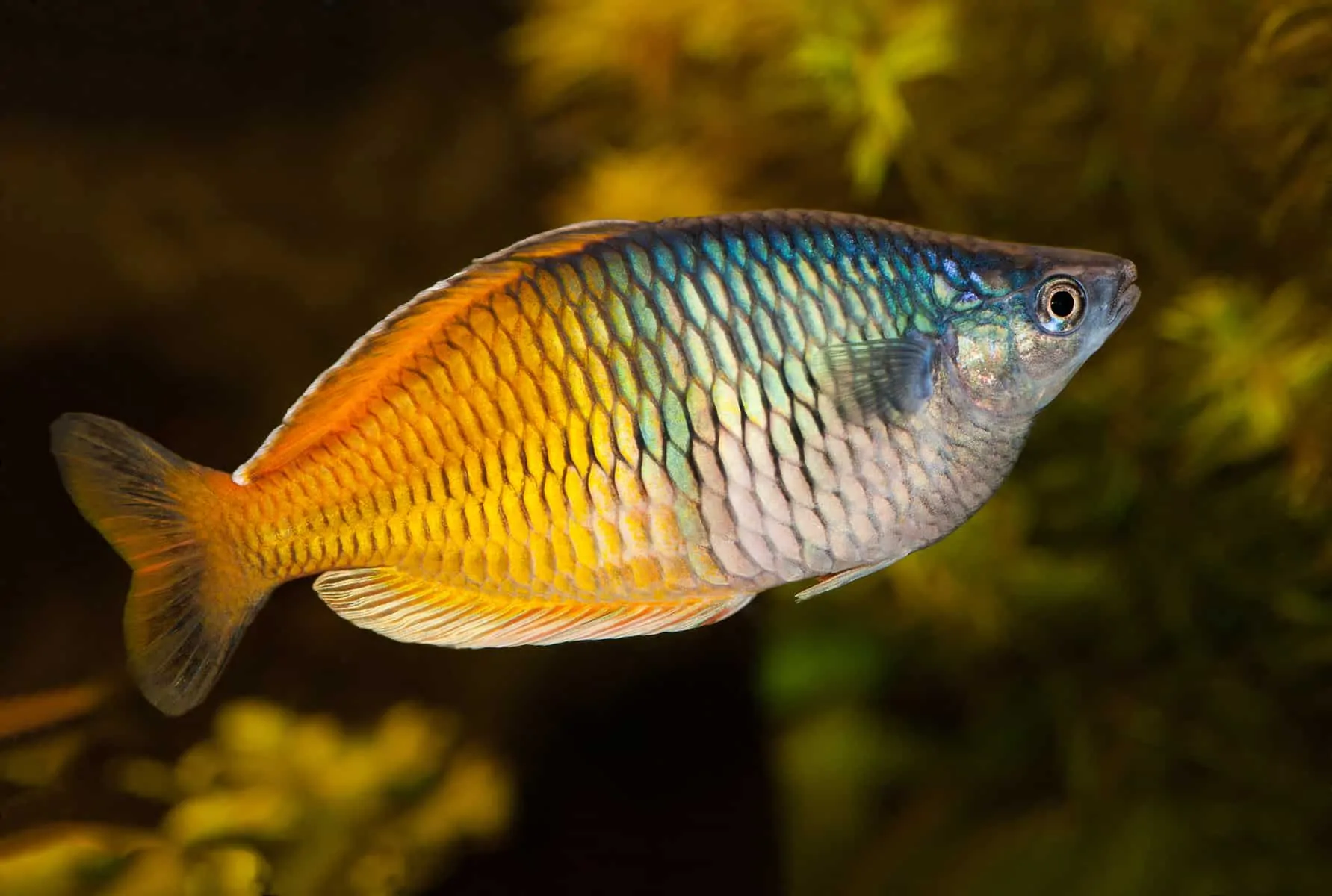With close to 100 different species of rainbowfish discovered, there is a lot to be learned from these little colorful fish! Many of these species have been adorned by the fishkeeping hobby due to their easy care and active behavior as well as the beautiful assortment of colors they come in.
Keep reading to find out some more about the Melanotaeniidae family and keeping rainbow fish in your own aquarium!
Melanotaeniidae: the rainbowfish family
Rainbowfish are a type of freshwater fish that is a part of the Melanotaeniidae family. They can be found in some parts of Australia, the islands of Indonesia, and widely throughout New Guinea and Madagascar.
The Melanotaeniidae family is split up into nearly 20 different genera, including Melanotaenia, Glossolepis, and Iriatherina, which are very popular in the aquarium trade. Here are some peaceful species from those genera that you are likely to come across:
Melanotaenia fluviatilis. These fish are commonly known as the Australian rainbowfish due to their native habitats being in Australia. These fish do best in a school and can grow up to 4 inches (10 cm). Males are bluish-brown and have a dark horizontal stripe down their midline. Females have much more subdued colors.
You can read our full care sheet for the Australian rainbowfish (Melanotaenia fluviatilis) here.
Glossolepis incisus. Otherwise known as the red rainbowfish, these fish are native to the Lake Sentani region of northern New Guinea. They are also active schoolers and can grow up to 4-6 inches (10-15 cm). Females are an olive-brown color while males are a vibrant red.
You can also find the full care sheet for the red rainbowfish (Glossolepis incisus) here.
Iriatherina werneri. The threadfin rainbowfish is the only member of Iriatherina and is found in very specific areas in New Guinea and Australia. These fish are less likely to school than the other two species and only grow to about 2 inches (5 cm). They are mostly appreciated for their long ornate fins and do best in a single-species tank.
What do rainbowfish eat?
Rainbowfish are omnivores. This means that in the wild, their diet is full of small invertebrates and algae. In the aquarium setting, they will readily accept fish flakes, brine shrimp, bloodworms, and mosquito larvae.
Make sure that any invertebrates you add to your tank won’t fit in the mouth of your rainbow!

How big do rainbowfish get?
These fish stay pretty small, but their need to be part of a school and active behavior makes them a more space-demanding species. Most rainbows will stay under 5 inches (12.7 cm) at adult size, with some going closer to 10 inches (25 cm), like Melanotaenia vanheurni.
However, these fish do best in a school of at least 6 or more and need a large enough tank that allows them to actively swim around.
What fish can live with rainbowfish?
Rainbowfish are very peaceful and get along with most other fish that can go in a community tank. While you should always double-check which species go best with your new fish, in general, they can go with other rainbowfish, barbs, danios, and cories.
Slower-moving fish may become easily stressed out by the constant movement of these fish and be outcompeted for food, so it is best to get with more active species that are a similar size.
These fish will also love a planted tank and their colors will look amazing against a dark natural backdrop. These fish prefer an aquarium with low lighting, so any plants that you use should be able to survive lower intensities.
Are rainbowfish schooling fish?
Yes! These peaceful fish love to school. However, you’re not likely to see two types of rainbowfish schooling together; they prefer to keep to themselves in groups of 6 or more for the most part.
It also seems that some rainbows school better than other rainbows; of course, this can always be due to the different personalities of the fish and tank conditions, but some hobbyists have had more success getting some to school as opposed to others.
Can rainbowfish be kept alone?
Keeping rainbows alone is not recommended. These fish are used to schooling in the hundreds, and possibly even thousands, in the wild; there is safety in numbers!
If you were to try keeping a rainbow alone, it would probably hide most of the time and be difficult to monitor. Your rainbow could be so shy that it stops coming out to eat, and that is definitely a big problem.
They are such a beautiful fish, there is no reason to keep one all by itself!

Conclusion
There are many types of rainbowfish available and each has its own trademark color that will bring life to your aquarium. Make sure to thoroughly search for care information about the type of rainbow you plan on getting, and allow tank space for at least 6 new fish.
If you have any more questions about rainbowfish care or have experience keeping rainbows in your own tank, don’t hesitate to leave a comment below!


